Toiyabe Range, Nevada
Summit Canyon is about 25 miles northwest of Round Mountain, the mining town that dominates the southern Smokey Valley (more about this in a later post). Summit Canyon is home to Summit Creek, and the creek was flowing at about 2 gallons-per-minute while we camped there (late April).
Like any regular source of moisture in the desert, Summit Creek sponsors a marked riparian environment. The stark, barren sage of the plains and hills gives way to a striking array of growth, replete with dense willows and much taller (than surrounding areas) pinion pines. (At lower elevations, cottonwoods can be found.) There were some other trees here too that I didn’t recognize, a task I’m not too adept at anyway made more difficult by no foliage (yet).
Just out of camp, one arm of the Creek runs by, too small to threaten a baby buggy’s passage, let alone our studly Ranger Ralph. We rolled on through.
[But just 50 yards further downstream, the Creek plays out into a small sink. This is pretty typical in porous desert soils, and it’s still possible to see the effects of the underground water in green plants in ravines.]
Driving upstream, the far peaks teased us. Our maps showed that the road dead-ended before crossing the 10,000’+ ridge. Besides, Ralph isn’t real big on being put into service as a snowmobile.
Down at 6,000 feet, there’s no snow, and LOTS of willows — sometimes downright tunnels like this —
— sometimes more open territory —
— and occasionally a real thicket to punch through. Once or twice, we forgot to roll up the windows, and got a real face-lashing from the willow branches snapping back off the windshield post and into the cab. Ouch.
The vegetation was pretty stark, but we could see the little buds on the willows. The place should be a riot of green in May.
Up above 8,000 feet we started to see small snowdrifts, and by 8,400 they were covering the road pretty well. Remember about Ralph not being excited about snow? Well, we gave it a shot anyway — all four wheels turning, progress forward = zero.
Yup, that’s the road right there – – – just six feet beneath the white stuff.
We had to leave Ralph in the brush, and hike up the snow-buried road on foot.
We climbed on top of the (semi-firm) snow and started to put our legs to work. Damn, 8,400 feet sure catches up with us sea-level types. Pant, puff, phew!!!! It took us probably 20-30 minutes to hike a quarter-mile in this stuff. Talk about cardio. (Later, hiking back down, I was astonished, frustrated, and humiliated to find that it’s almost as much work walking DOWNHILL in deep snow!)
We stopped to catch our breath when the road played out. Karin played with some rocks and discovered they come apart in perfectly flat sheets only about THIS [<->] thick! She could literally split the rocks apart with her fingertips (and no broken nails!). The amazing thing about this is that these obviously sedimentary rocks were formed as part of an ancient sea bed. Now they are part of jagged peaks, 1.5 miles higher than their “birth altitude”.
Here’s a photo looking back down Summit Canyon. I’m damned if I know why they named it that, since it doesn’t go to, or anywhere near, any summit. The road/trail stops short by at least a half-mile, and way more than 1,000 feet elevation. Maybe wishful thinking? If it ever did go through, there’s no trace of it left, but the existing road is still quite obvious.
Traveling back down the canyon, we took some time to check out the old mining remains. There was a pit way up a canyon wall, and tailings from it all over the place.
Across the stream was the miner’s home, all built from local sandstone.
Here’s the mining “works” — see the thin line at the top of the picture? That was a steel-cable tram line to bring the diggings from the high-slope mine-shaft, across the stream, and to be dealt with next to the access road. It’s unlikely that any processing occurred here, more likely just getting the ore onto transports to be taken down to the valley below.
Once again, we were blown away by the rough terrain and hard, hard lives that these early miners led. Horrendously strenuous work, lousy food, cold weather and not much company to complain to.
The weather had started to deteriorate by the time we approached camp, but it was still clear enough to see across Smokey Valley to the far peaks of the Toquima Range.
Our third day in camp, two miles off of NV376, and not a soul has wandered by. Nobody comes up here much, and that’s just fine with us. Peace and tranquility like this are not easy to come by — we happily accept our isolation, and revel in the quiet and space.
Here’s Howie/Ralph at the left side of the photo, and the little squiggle of the access road at the right, two miles away. NV376 goes along the dark line above the access road. Northern Smokey Valley alkali playa is in the near distance, and the northern Toquima Range makes up the far horizon. (The funny little circle in the sky was some odd quirk of cloud formation, a small rotor cumulus.)
The weather was quite variable. We decided to hike away from camp a bit and check out the local hills. Of course, we had to watch our step in the rugged terrain. And that allowed us to notice some of the tinier occupants of the desert.
A miniature barrel cactus – – –
Tiny, but brilliant, wildflowers – – –
Camouflaged lizards – – –
And sphynx moths!! These guys are so bird-like, I thought I was looking at a micro-hummingbird. But they’re moths, and they have a proboscis that’s probably 1.5X the length of their body, maybe 2″ long. Wikipedia says these things get up to 8″ wingspans!!! That would be something to see.
Lichens, those near-microscopic, colorful plants that wear away rocks over the eons – – –
In short, lots of visual treats in exchange for a careful look downward.
The hike turned out to be pretty strenuous, well, in fact, butt-busting for me. At 7,000 feet the oxygen was still thin, and trail slopes were running about 20%-30% grade. Trudge, grunt, pant, puff.
At the top, we found another mine, and yet AGAIN ample evidence of miners that had a lot more strength and endurance than we were showing that day.
Here’s a nice situational shot, from the mine looking eastward. Toquima Range in the far distance; crop irrigation circles across NV376; Summit Canyon road twisting off to the left (Howie is out of frame to the left). This is the terrain we hiked, and the terrain that the miners negotiated with their equipment and ores.
Even though it was mostly downhill, the walk back to camp really busted my chops. I was fervently hoping I’d get used to the altitude soon. Karin was much less impacted, seemed to sail through it, and was way ahead of me the whole time. I wasn’t feeling too macho that day <grin>.
Still – – – a great hike and wonderful views large and small. We were really liking our camp site “find”.
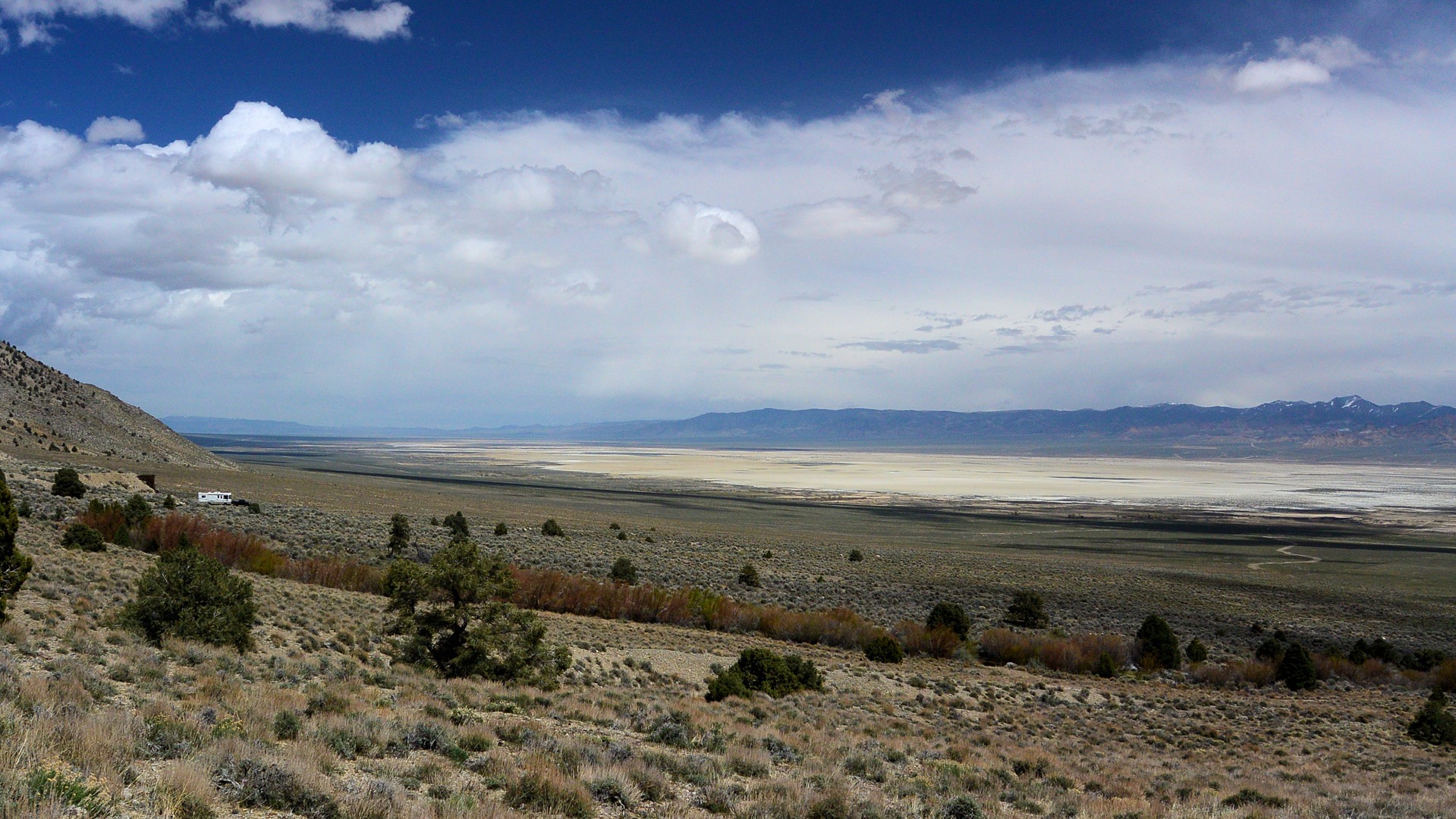
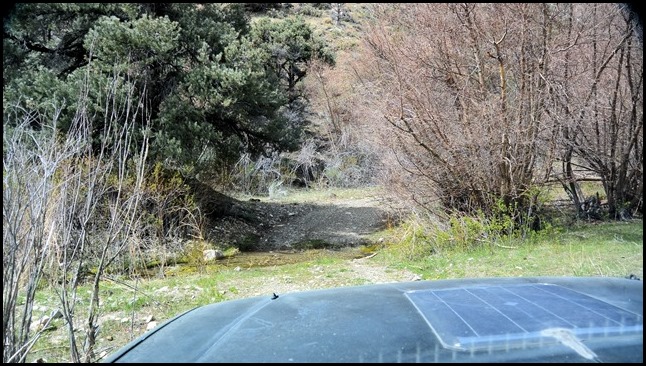
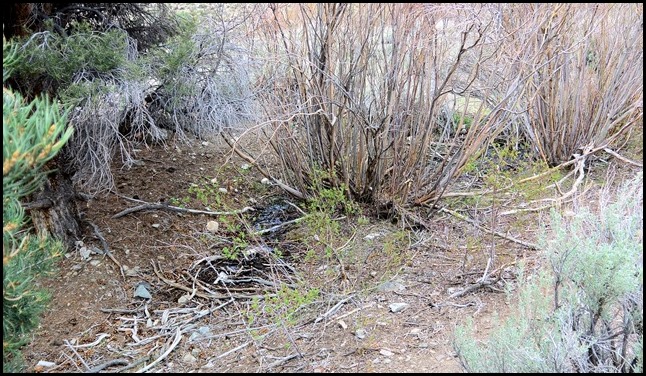
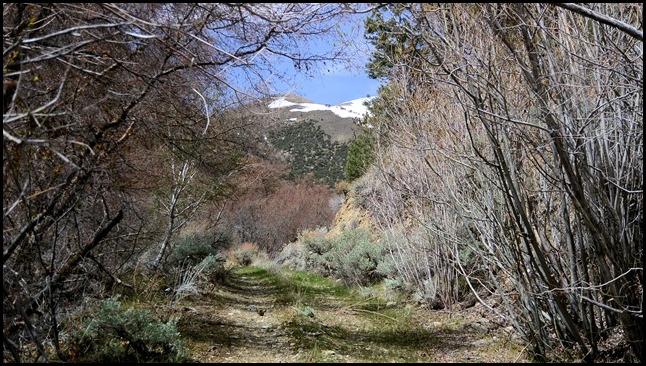
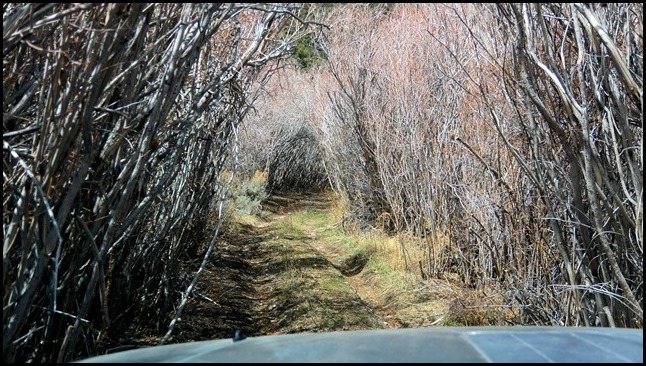
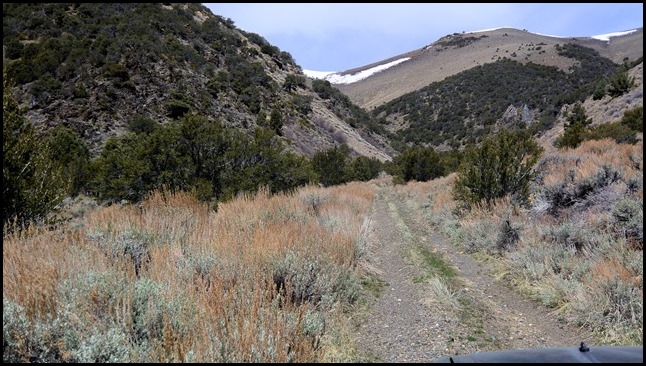
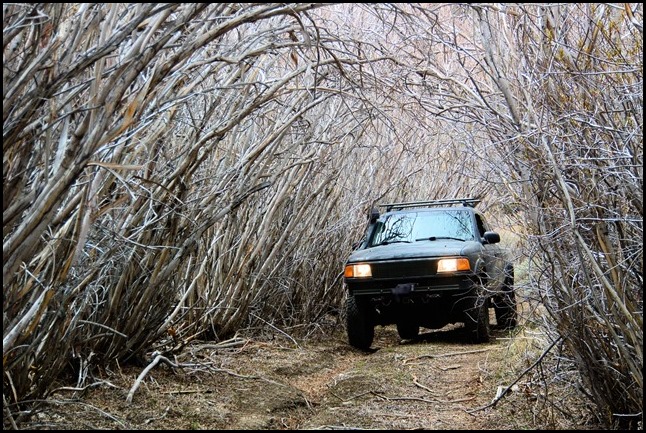
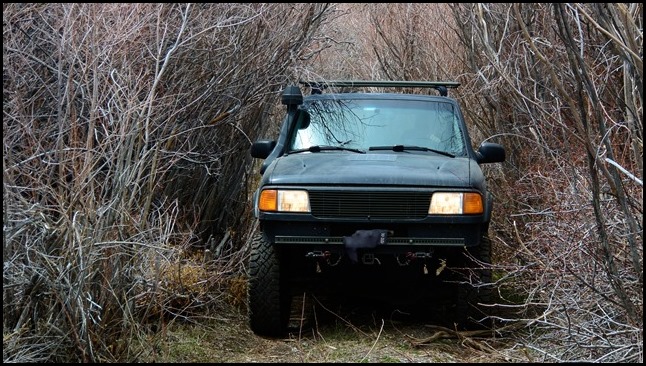
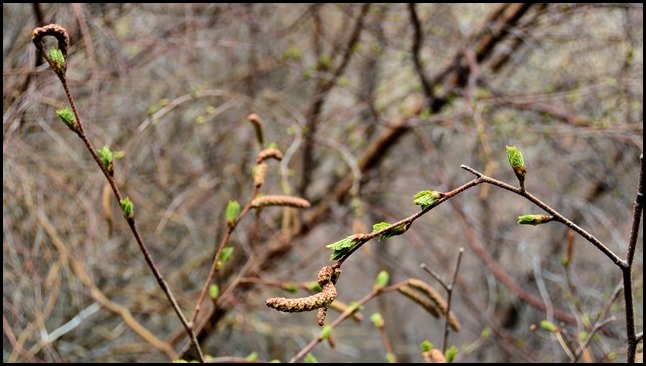
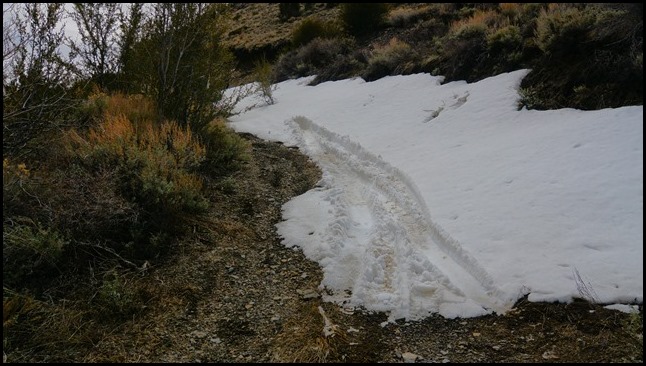
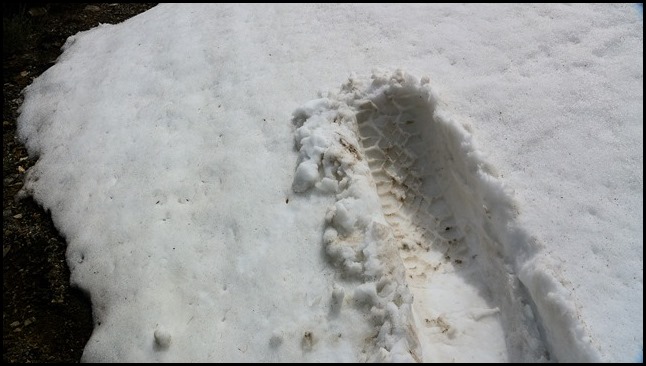
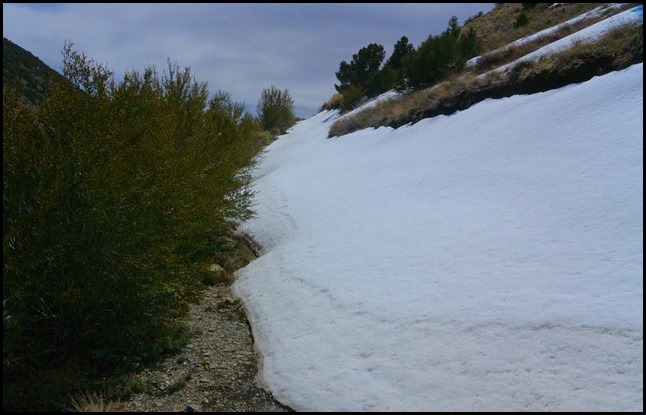
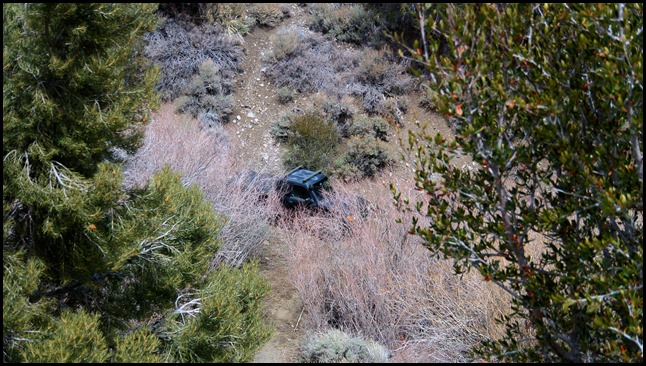
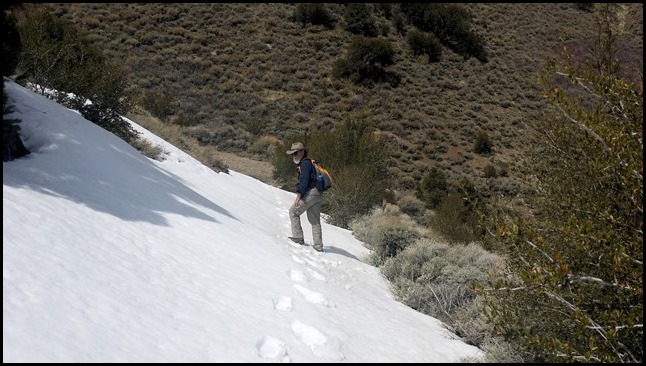
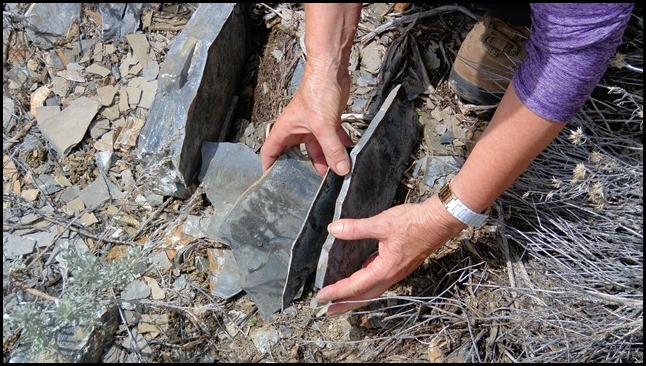
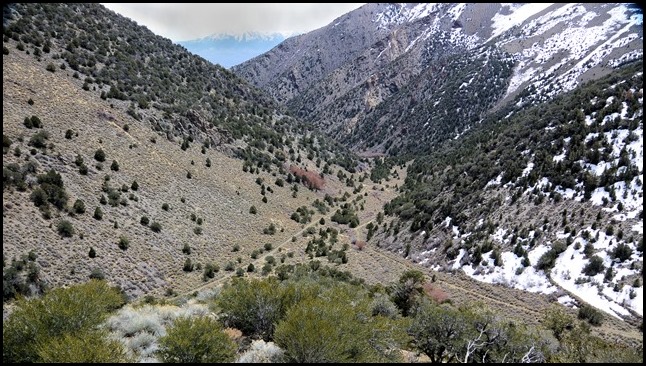
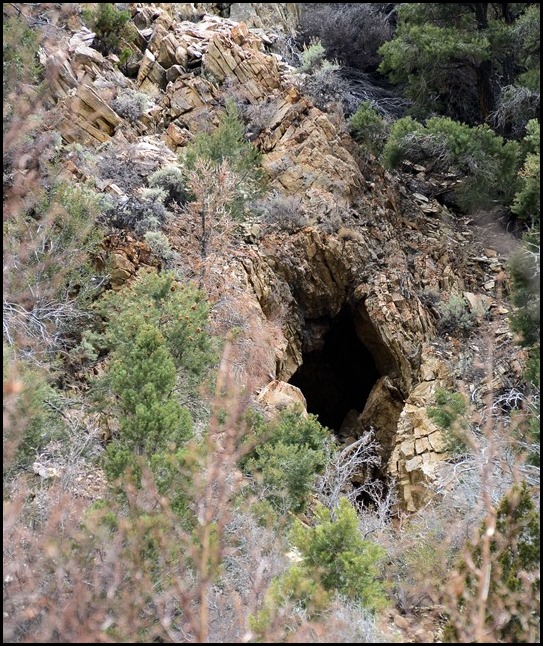
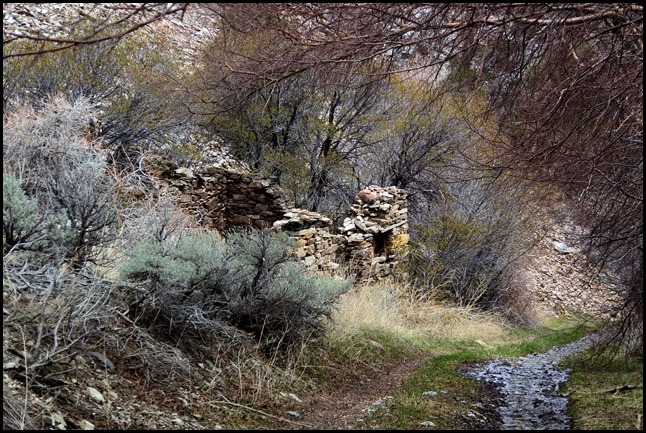
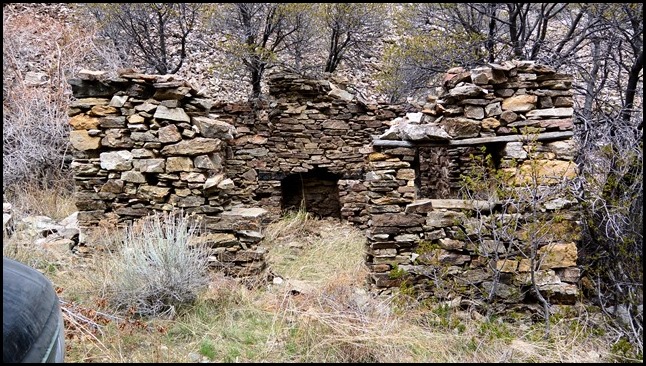
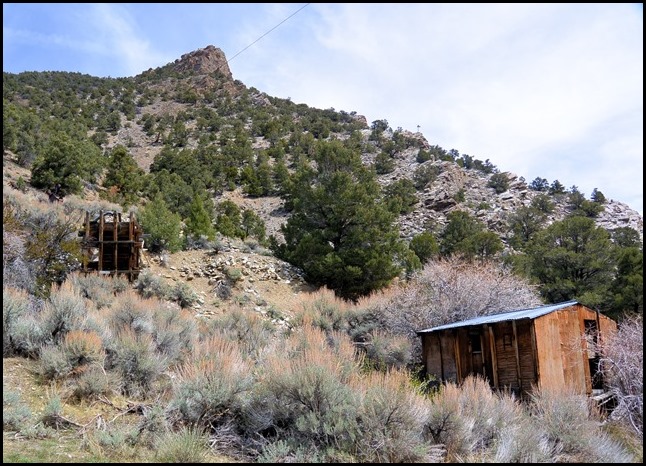
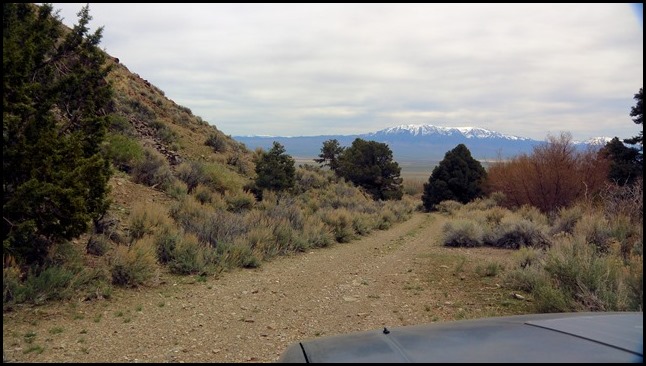
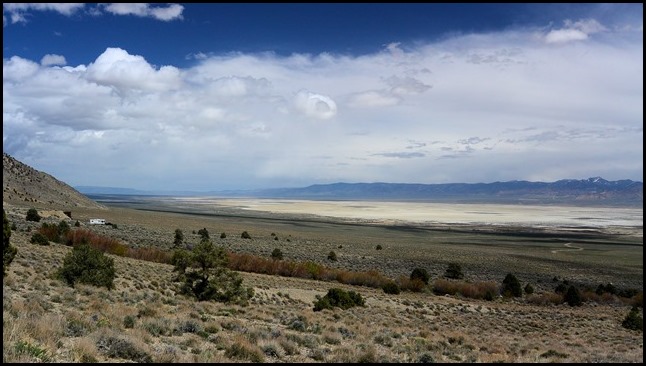
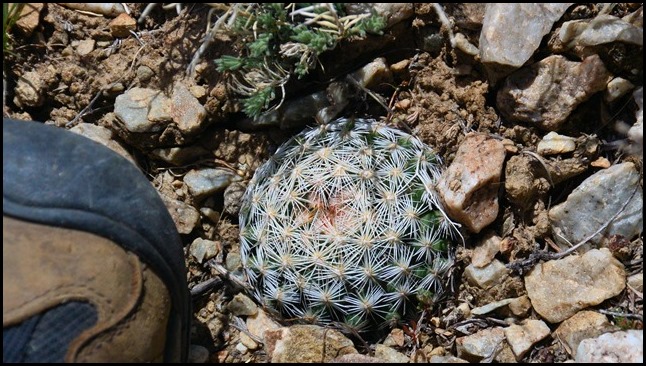
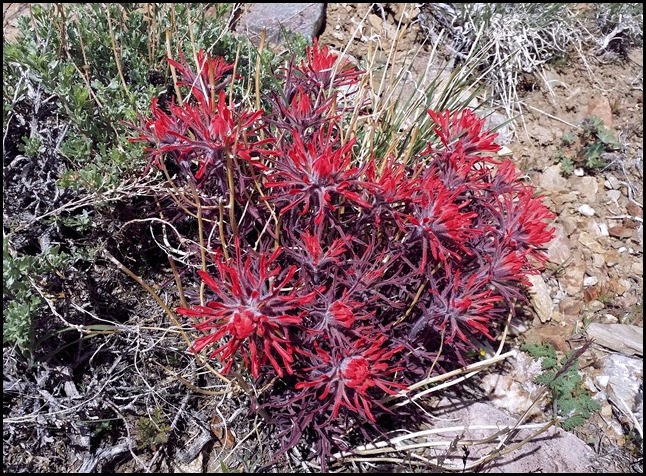
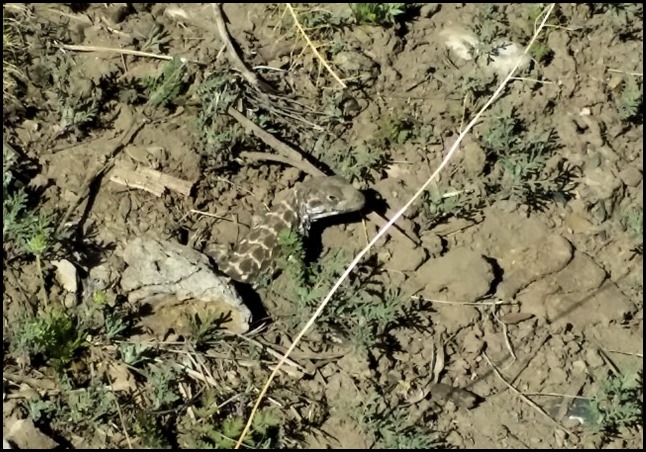
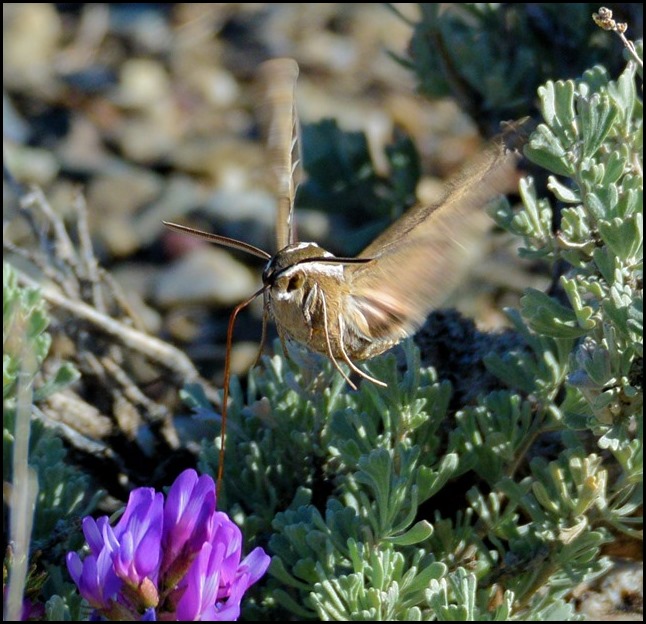
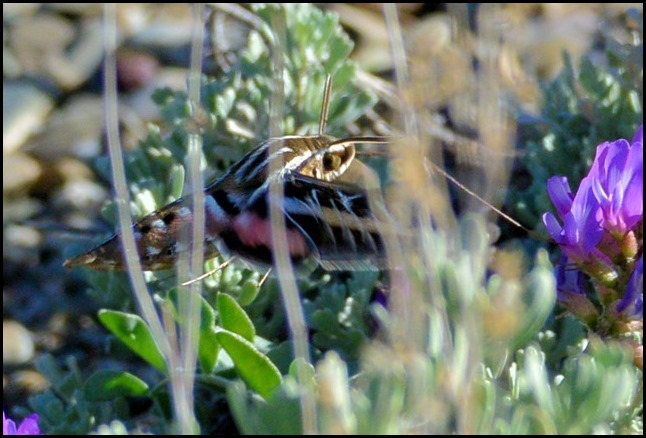
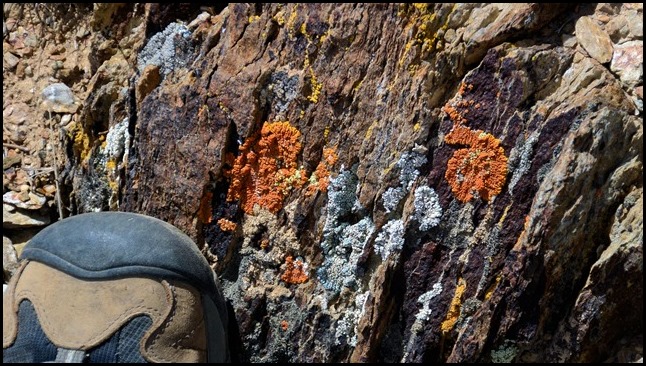
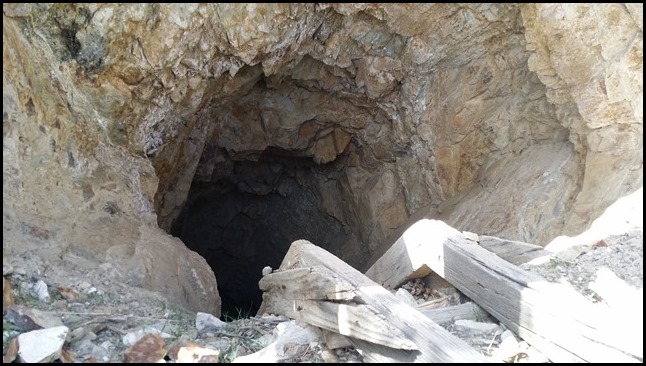
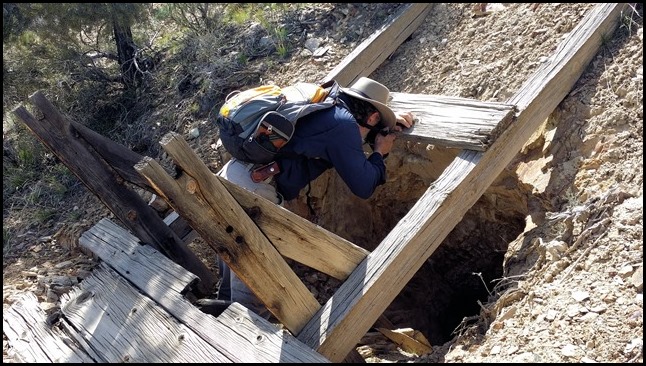
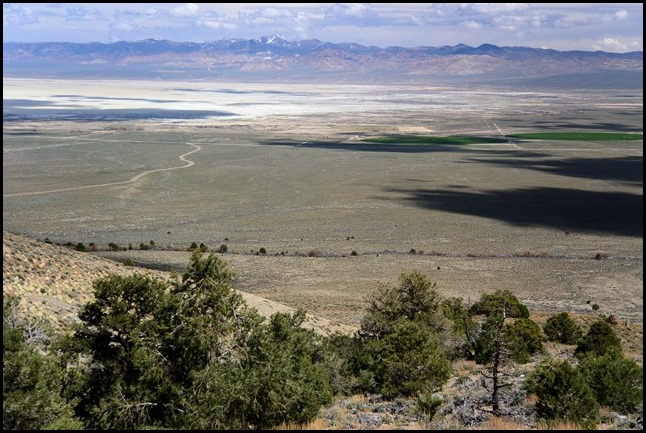
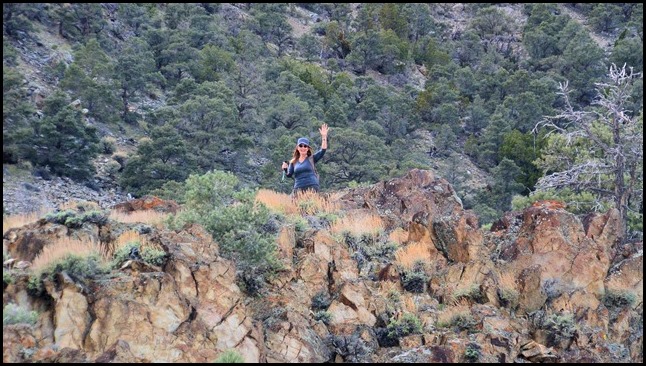
Have you ever considered about including a little bit more than just your articles? I mean, what you say is valuable and everything. However think about if you added some great visuals or video clips to give your posts more, &##;202pop&88221;! Your content is excellent but with images and videos, this blog could certainly be one of the greatest in its field. Fantastic blog!
Cindy,
Thanks for the compliments. I have considered two things: more writing (words) and adding videos. I’ve found (by talking to my readers) that the words are not always read, but the pictures are always seen. So it’s a disincentive, even though I love to write.
Videos are simply too data-intensive. I rarely get a really good Internet connection, and sometimes it takes an hour just to upload a post with images. So videos are on the indefinite back-burner for now.
thanks for reading,
G.
You two are so adventurous! Stay safe & have fun……
Well John,
Every time I feel adventurous, I get really nervous. We try to make things as safe as possible, which I guess makes it all less adventurous? We have satellite links, survival kits, spare food, water, gas, tools and maps. We try real hard to make s**t NOT happen.
:o)
G.